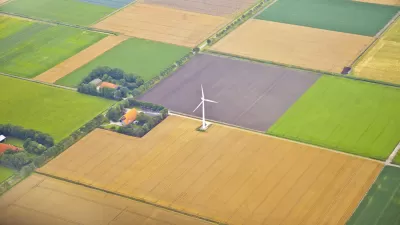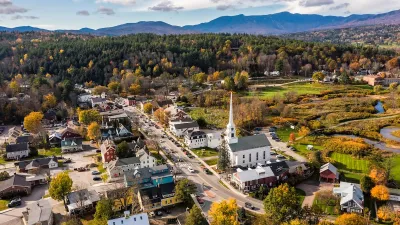As pension funds and institutional investors, faced with low interest rates, are searching for non-traditional investments, the U.S. Department of Agriculture will play matchmaker for a new $10 billion rural investment fund.
"The White House Rural Council will announce plans on Thursday to start a $10 billion investment fund that will give pension funds and large investors the opportunity to invest in agricultural projects. Those include wastewater systems, energy projects and infrastructure development in rural America," reports Alexandra Stevenson.
Officials from the U.S. Department of Agirculture say the fund will create a new role for the department.
Here's where the money came from: "The fund, called the Rural Infrastructure Opportunity Fund, will be backed by CoBank, a cooperative bank and a member of the Farm Credit System, a government-sponsored network of banks that lend to the agriculture industry. CoBank has committed the first $10 billion to the fund."
Here's how it will work: "Capitol Peak Asset Management, an investment firm, will manage the fund’s investments and the Agriculture Department will help find projects for the fund. Investors will be able to make debt and equity investments in individual and bundled projects. They will earn returns on their principal investments along with interest."
FULL STORY: White House to Begin $10 Billion Rural Investment Fund

Study: Maui’s Plan to Convert Vacation Rentals to Long-Term Housing Could Cause Nearly $1 Billion Economic Loss
The plan would reduce visitor accommodation by 25,% resulting in 1,900 jobs lost.

North Texas Transit Leaders Tout Benefits of TOD for Growing Region
At a summit focused on transit-oriented development, policymakers discussed how North Texas’ expanded light rail system can serve as a tool for economic growth.

Why Should We Subsidize Public Transportation?
Many public transit agencies face financial stress due to rising costs, declining fare revenue, and declining subsidies. Transit advocates must provide a strong business case for increasing public transit funding.

How to Make US Trains Faster
Changes to boarding platforms and a switch to electric trains could improve U.S. passenger rail service without the added cost of high-speed rail.

Columbia’s Revitalized ‘Loop’ Is a Hub for Local Entrepreneurs
A focus on small businesses is helping a commercial corridor in Columbia, Missouri thrive.

Invasive Insect Threatens Minnesota’s Ash Forests
The Emerald Ash Borer is a rapidly spreading invasive pest threatening Minnesota’s ash trees, and homeowners are encouraged to plant diverse replacement species, avoid moving ash firewood, and monitor for signs of infestation.
Urban Design for Planners 1: Software Tools
This six-course series explores essential urban design concepts using open source software and equips planners with the tools they need to participate fully in the urban design process.
Planning for Universal Design
Learn the tools for implementing Universal Design in planning regulations.
Ascent Environmental
Borough of Carlisle
Institute for Housing and Urban Development Studies (IHS)
City of Grandview
Harvard GSD Executive Education
Toledo-Lucas County Plan Commissions
Salt Lake City
NYU Wagner Graduate School of Public Service




























